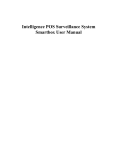Download DIGR-1300/I - manual
Transcript
Karel Skipala Automatization of production processes, machine control modernization, production of industrial electronics. http://www.skipala.cz USER MANUAL FOR DIGITAL REGULATOR DIGR-1300/I Version: 2.7.1 November 2007 1. Technical properties Supply voltage Switching voltage Maximal output current Coverage Working temperature Power dissipation Suppression of interference Short circuit proof Dimensions Weight 18-24V DC max 230V/50Hz 3A IP20 10-55oC (50-130°F) 7W EN 55011/B 1.5kA 106x90x58 (WxHxD) 0.4kg 2. Generally Regulator DIGR-1300/I is intended to power regulation of vibration feeders driven by electromagnetic coil. Regulator’s main component is triac, which is switched with phase shift. Regulator enables step setting of frequency: 100Hz, 50Hz, 33Hz, 25Hz, and 20Hz. The intensity of oscillations can be set from range 20–99%. Function of regulator is programmed from control panel by user. Regulator can be controlled from control panel or by external analog or digital signals. If you need to switch bigger power than the regulator enables, you can connect an extern power module to it. The control and power part are safely separate. Small dimensions and effective user functions create preconditions for using these regulators (working alone or with superior system PLC) in most applications of vibration feeders. 3. Before connection Check up the regulator. Be sure it hasn’t been damaged by transport. In the case of damage contact the supplier. If you see dewiness, wait for it’s evaporating. 4. Installation Mount the regulator to a terminal strip DIN TS35 in horizontal position. It is important to keep free space (20mm from upper and lower border) because of cooling. 2/13 5. Connection Only persons with adequate electrotechnical qualification are allowed to connect the regulator. Warning! Connect only when disconnected from power network. Make connection according to pic.1 or pic.2 or pic.3. It is necessary to make overload and short circuit protection. Choose current value and characteristics of protection element according to the inputting power of used vibration feeder. When using extern power module, it must contain accordant EMI filter. Connect clamps +24V and 0V with 24V for supplying the control part. If you use sensors, they are supplied from this source. If you supply them from other source, it’s necessary to connect potentials 0V. Connect sensors and digital or analog signals according to demands of current application (pic.1). For advanced explanation see chapter 8 – Functions description. Sensors are powered by safely separate voltage 24V DC, current drain of both sensors must not exceed 50mA. Prefer sensors of PNP type (output signal is attached to +24V). If you use sensors NPN, it’s necessary to put a 3.3kΩ resistor between supply clamp +24V and signal. 3/13 pic.1 – outer connection of regulator FU1 3,15A supply 230V AC L U U1 N N N1 PE PE vibration feeder supply 24V DC + +24V - 0V SQ2 min store MIN SQ1 max. store MAX 0-10V 0-20mA AIN 5k/N power regulation +5V + + - AIN 560 AIN 4/13 OUT pic.2 – connection of extern power module switching voltage 230V 1 EMI FILTER 2 1 2 A1 FU1 FU2 63mA L supply N 230V AC PE supply 24V DC vibration feeder U U1 N N1 PE + +24V - 0V SQ2 min store MIN SQ1 max. store MAX 0-10V 0-20mA AIN 5k/N power regulation +5V + + - A2 OUT AIN 560 AIN 5/13 pic.3 – connection of extern power module switching voltage 400V 1 EMI FILTER 2 1 2 A1 T1 400/230 FU1 FU2 63mA L1 supply L2 400V AC PE vibration feeder U U1 N N1 PE supply 24V DC + +24V - 0V SQ2 min store MIN SQ1 max. store MAX 5k/N power regulation 0-10V 0-20mA AIN +5V + + - A2 AIN 560 AIN 6/13 OUT 6. Switching-on Regulator will automatically switch on after connection of supply voltage 24V and at the same time or before connection of power voltage 230V. However this setting is not suitable as START - STOP of regulator because there is a min. 3s time-out between switchingoff and switching-on. If this time-out is not kept the regulator may get blocked. In that case you must do restart (see chapter 9). Do START-STOP by signal +24V connected to clamp MAX (see chapter no.8 Functions description - no.1). 7. Setting Switch on the regulator and press button . The number of function no.0 and its value will be shown on the display. Set value of the function by buttons . Press the button again. The number of function will increase by 1. After setting all values press button that will save all set values into memory. If you are not in setting mode you can set only value of function no.0. – required power. Regulator can’t save the change of value when running. Save will be done after changing state to STOP. Warning! If the regulator is RUN mode and you switch it off by disconnecting it from power network, the value of function no.0 won’t be saved into memory. The meaning of functions and their values is described in chapter 8 and in table pic.4. 8. Functions description Function no.0 – required power The regulator regulates power in maximal range 20-99% with step 0.5%. Value 0.5% is expressed by turning on the decimal point. The range of required power is limited by values of function no.6 – minimal power and no.7 – maximal power. Function no.1 – sensors Regulator can work according to the needs of concrete application without sensors, with one sensor or with two sensors. Signals from sensors set the regulator to STOP or RUN mode. Status STOP is signalised by 7/13 turning on the decimal point at number showing the number of function. The influence of sensors depends on value of function no.1: 00- Sensors are not connected. The feeder constantly in RUN mode after switching-on. is 01- One sensor is connected: SQ1 - maximal store. If the sensor is active (there’s +24V on clamp MAX) the feeder is in STOP mode. In other case the feeder is in RUN mode. The change from STOP to RUN mode and otherwise is done with a time-out set by value of function no.2 and no.3 (see down). 02- Two sensors are connected: SQ1 and SQ2. If sensor SQ2 is not active (there’s 0V on clamp MIN) regulator is in RUN mode. If both sensor SQ1 and SQ2 are active (there’s +24V on clamps MIN and MAX) regulator is in STOP mode. The change from STOP to RUN mode and otherwise is done with a time-out set by value of function no.2 and no.3 (see down). 03- One sensor is connected: SQ1 - maximal store. Its behaviour is inverse to value 01. If the sensor is not active (there’s 0V on clamp MAX) the feeder is in STOP mode. In other case the feeder is in RUN mode. The change from STOP to RUN mode and otherwise is done with a time-out set by value of function no.2 and no.3 (see down). If you start the regulator by superior controlling system PLC, use this setting. Connect the START signal with clamp MAX. 04- Two sensors are connected: SQ1 and SQ2. Their behaviour is inverse to value 02. If sensor SQ2 is active (there’s +24V on clamp MIN) regulator is in RUN mode. If both sensors (SQ1 and SQ2) are not active (there’s 0V on clamps MIN and MAX) regulator is in STOP mode. The change from STOP to RUN mode and otherwise is done with a time-out set by value of function no.2 and no.3 (see down). 8/13 Function no.2 – time-out when changing to RUN mode Regulator is in STOP or RUN mode according to the information from sensors. The change from STOP to RUN mode is done with a time-out. This time-out is expressed by value 0 – 99 which means 0 – 9.9s. Function no.3 – time-out when changing to STOP mode Regulator is in STOP or RUN mode according to the information from sensors. The change from RUN to STOP mode is done with a time-out. This time-out is expressed by value 0 – 99 which means 0 – 9.9s. Function no.4 – regulation method The value of function no.4 determines the way how the required power is set: 00- Power is set by buttons . 01- Power is set by voltage signal 0-5V on clamp no.11. This setting is suitable for using the potentiometer. Value of the potentiometer must be from range 1-10kΩ. 02- Power is set by voltage signal 0-10V or by current signal 0-20mA on clamp no.11. If you use current signal it’s necessary to put a 560Ω resistor between clamp no.11 and clamp no.12. Function no.5 – automatic switching-on 00- Automatic switching-on is blocked 01- The regulator will be automatically switched on after connection of supply voltage. Function no.6 – minimal power Low limit of regulation is set by value of this function. Minimal value is 20, maximal value is 10 units lower than the value of maximal power (function no.7). Function no.7 – maximal power High limit of regulation is set by value of this function. Minimal value is 10 units higher than the value of minimal power (function no.6), maximal value is 99. 9/13 Function no.8 – oscillations frequency The range for frequency of oscillations is 20-100Hz. The gist of frequency change consists in skipping a certain count of sinusoid half-waves of regulated voltage. Its result is a discontinuous “jump” change. The range of this function is 0 – 4 that means frequency 100-20Hz (see table pic.5). Function no.9 – run-up, run-out In some cases it is desirable to run-up and run-out the feeder continuously. You can set the speed of run-up and run-out ramp by setting this value from range 0-5. Value 5 means time 5s for run-up from 0% to 100%. 9. Maintenance Regulator doesn’t require any special maintenance. In case of failure do not do any repairs and send the regulator to the manufacturer. A permissible faint power oscillation can occur when the regulator works. This is caused by interference from supply network. If the regulator doesn’t work properly you can do the restart that sets all functions to default. To restart the regulator disconnect it from power 24V, press the button SET, connect the regulator to the power 24V and finally release the SET button. 10/13 pic.4 - Functions table function no. 0 power 1 sensors 2 RUN time-out 3 STOP time-out 4 control value 20-99 00 01 02 03 04 00-99 00-99 00 01 02 5 switchingon 6 min. power 00 01 20-89 7 max. power 30-99 8 oscillations frequency 00 01 02 03 04 0-5 9 run-up description required power (20-99%) no sensors one sensor, log.1 switches off two sensors, log.1 switches off one sensor, log.0 switches off two sensors, log.0 switches off time-out when switching from status STOP to RUN (0 – 9.9s) time-out when switching from status RUN to STOP (0 – 9.9s) power is set by control panel power is set by potentiometer RP1 power is set by signal 0-10V or 0-20mA automatic switching-on blocked automatic switching-on allowed minimal power limitation (20-89%) maximal power limitation (30-99%) 100 Hz 50 Hz 33 Hz 25 Hz 20 Hz time of run-up and run-out ramp (0–5s from 0% to 100%) 11/13 pic.5 – control panel description Required power, value of function in setting mode Number of function (shown only in setting mode) Value increasing Signalling of STOP status SET – entry to the setting mode Value decreasing 0.5% 12/13 10. Manufacturer’s declaration Manufacturer declares that the product corresponds to all requirements consequent on decree of the government no. 17/2003 Sb. and no. 18/2003 Sb. about technical requirements on products in full wording. Ground for this declaration is certificate of Electrotechnical testing institute no.1060967. This product is safe under condition of usual using and conditions noticed in this manual. CERTIFICATE No.1060967 . 11. Warranty We provide you a 12 months warranty since the day of sale. Serial number: Dealer: date of sale: 12. Manufacturer Production and service by: Karel Skipala Rybník 162 560 02 Česká Třebová Czech Republic tel.: 00420 465 533 410 fax : 00420 465 530 070 e-mail: [email protected] website: http://www.skipala.cz 13/13













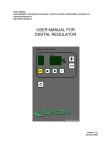
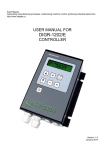
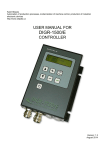
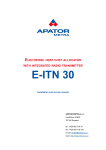
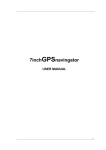

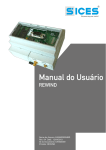
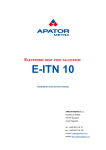
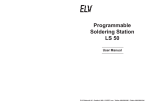
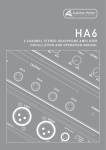
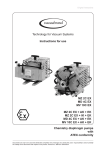


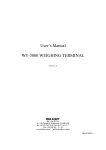
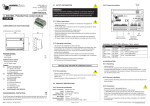
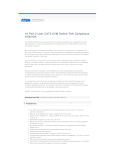
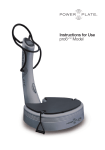
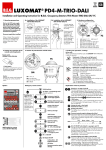
![[U4.33.01] Opérateur IMPR_FONCTION](http://vs1.manualzilla.com/store/data/006364725_1-cf170165efd19facb3106a56189ffb29-150x150.png)


